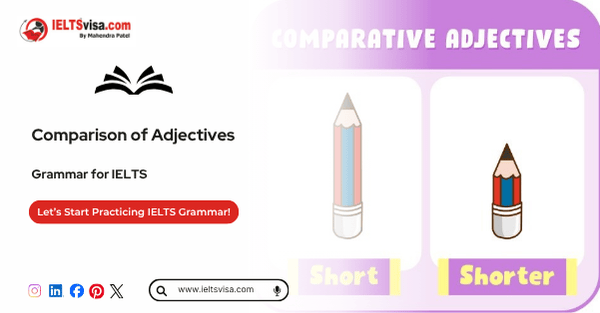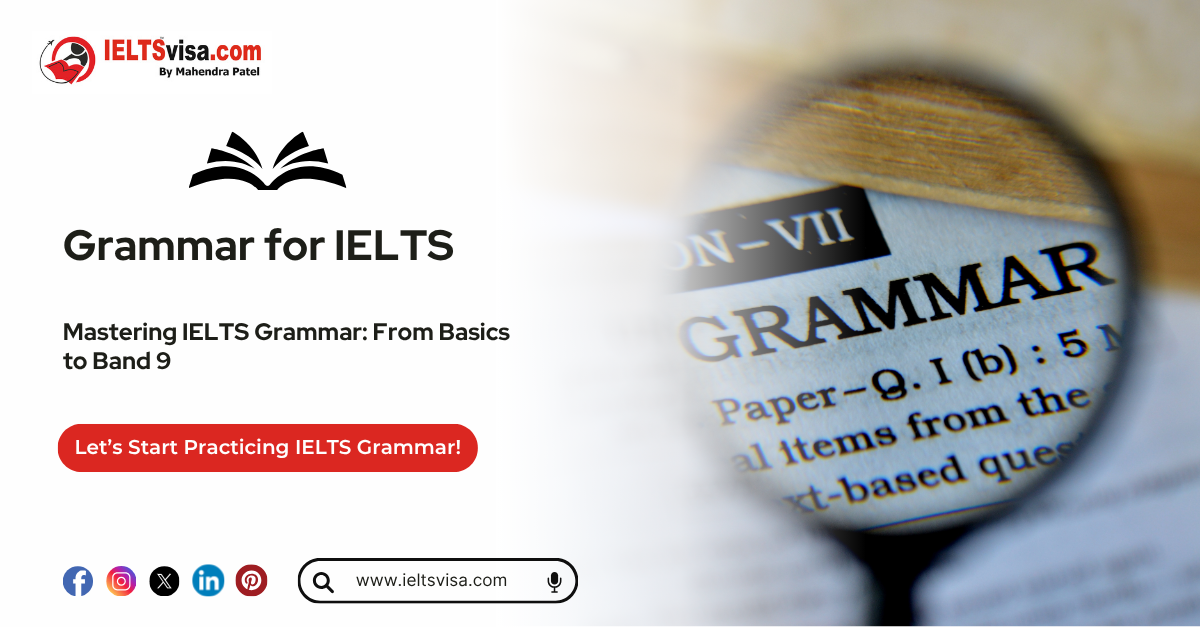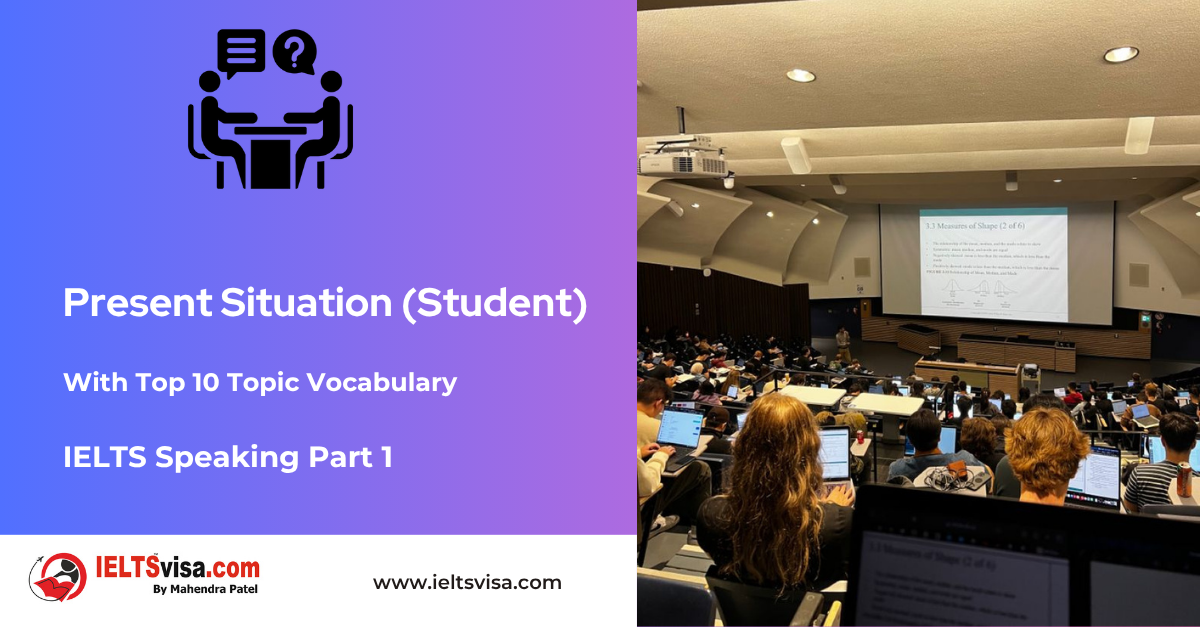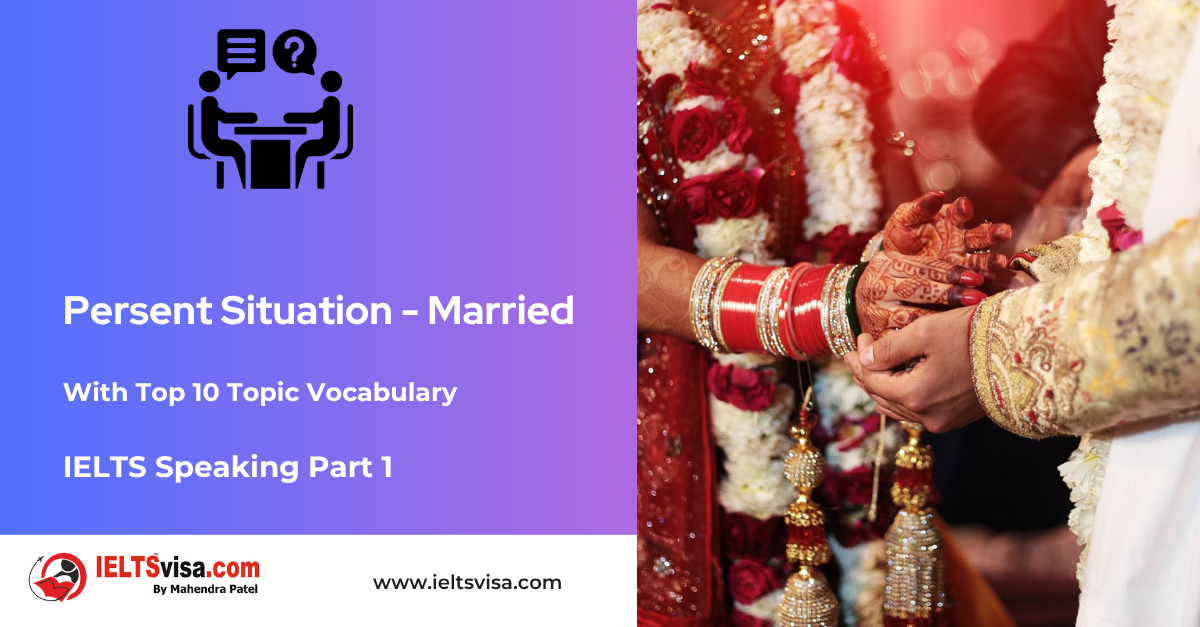Comparative Adjectives
Grammar for IELTS

Comparative Adjectives Definition, Forms, Types, Usage, and Examples
Comparative adjectives are essential tools in English grammar. They enable us to compare two things, helping us to express the differences or similarities between them. In this guide, we’ll explore the meaning, definition, usage, and examples of comparative adjectives and learn how to use them effectively.
Table of Contents
- What Are Comparative Adjectives?
- Definition of Comparative Adjectives
- How to Use Comparative Adjectives in Sentences
- Rules for Forming Comparative Adjectives
- Irregular Comparative Adjectives
- Comparative vs. Superlative Adjectives
- Practice Questions
- Frequently Asked Questions
What Are Comparative Adjectives?
Comparative adjectives are used to compare two things or people. These adjectives highlight how one thing differs from another in terms of a specific quality or trait.
Examples:
-
-
- The train is faster than the bus.
- My dog is friendlier than my neighbour’s cat.
-
Definition of Comparative Adjectives
A comparative adjective is a word that modifies a noun or pronoun by showing a difference in quality, quantity, or degree when comparing two things.
According to grammar rules:
-
- Short adjectives usually add -er to the end of the word.
- Long adjectives use more before the word.
How to Use Comparative Adjectives in Sentences
The most common sentence structure for using comparative adjectives is:
[Noun A] + [verb] + [comparative adjective] + than + [Noun B]
Examples:
-
- The mountain is taller than the hill.
- She is more confident than her classmates.
Other Sentence Structures:
1. Comparative adjectives can appear in phrases:
-
- Stronger than an ox, he carried the heavy load effortlessly.
2. Implicit Comparisons (where the second thing is understood):
-
- This soup tastes better! (compared to another soup).
3. Without “than” (when the context makes the comparison clear):
-
- My car is faster.
Rules for Forming Comparative Adjectives
Here are some simple rules to help you form comparative adjectives correctly:
1. One-Syllable Adjectives
Add -er to the end of the adjective.
Example:
-
- Tall → Taller
- Fast → Faster
2. One-syllable adjectives Ending in -e
Just add -r to the end.
Examples:
-
- Large → Larger
- Cute → Cuter
3. One-syllable adjectives with Consonant-Vowel-Consonant
Double the last consonant and add -er.
Examples:
-
- Big → Bigger
- Thin → Thinner
4. Two-Syllable Adjectives Ending in -y
Change the y to i and add -er.
Examples:
-
- Happy → Happier
- Easy → Easier
5. Adjectives with Two or More Syllables
Use more before the adjective.
Examples:
-
- Beautiful → More beautiful
- Interesting → More interesting
6. Use “Less” for Negative Comparisons
For any adjective, you can use less to make a negative comparison.
Examples:
-
- He is less confident than his brother.
- This test was less challenging than the previous one.
Irregular Comparative Adjectives
Some adjectives do not follow the regular rules. These are called irregular comparative adjectives.
| Adjective | Comparative Form |
| Good | Better |
| Bad | Worse |
| Far | Farther/Further |
| Fun | More fun |
Examples:
-
-
- This book is better than the one I read last week.
- The weather is getting worse.
-
Comparative vs. Superlative Adjectives
It’s easy to confuse comparative adjectives with superlative adjectives. Here’s how they differ:
|
Comparative Adjectives |
Superlative Adjectives |
|
Compare two things or people. |
Compare three or more things/people. |
|
Use -er or more. |
Use -est or most. |
|
Example: This car is faster than that one. |
Example: This car is the fastest of all. |
Practice Questions
Fill in the blanks with the correct comparative adjective:
1. This house is _______ than the one next door. (big)
2. She runs _______ than her brother. (fast)
3. That problem is _______ to solve than this one. (easy)
4. My new phone is _______ than my old one. (good)
5. He is _______ in math than I am. (bad)
Answers to Practice Questions
1. This house is bigger than the one next door.
2. She runs faster than her brother.
3. That problem is easier to solve than this one.
4. My new phone is better than my old one.
5. He is worse in math than I am.
Frequently Asked Questions
Q1: What are comparative adjectives?
Comparative adjectives are used to compare two things, showing how one is different in quality, quantity, or degree from the other.
Q2: How do you form a comparative adjective?
For short adjectives, add -er. For longer adjectives, use more before the word.
Q3: What are irregular comparative adjectives?
Irregular comparative adjectives don’t follow standard rules. Examples include good → better and bad → worse.

Our Books
Master IELTS Speaking Part 1
IELTS Writing Task 1 Book
IELTS Writing Task 2 Book
Practice IELTS Other Modules
IELTS Listening
The IELTS Listening test assesses how well you can understand spoken English in various contexts. It lasts about 30 minutes and is divided into four sections with a total of 40 questions. The listening tasks become increasingly difficult as the test progresses.
IELTS Academic Reading
The IELTS Academic Reading section assesses your ability to understand and interpret a variety of texts in academic settings. It is designed to evaluate a range of reading skills, including skimming for gist, reading for main ideas, reading for detail, understanding inferences, and recognizing a writer's opinions and arguments.
IELTS Speaking
The IELTS Speaking test assesses your ability to communicate in English on everyday topics. It lasts 11-14 minutes and consists of three parts: introduction, cue card, and a discussion based on the cue card topic.
IELTS General Reading
IELTS General Reading tests your ability to understand and interpret various types of texts. Here are some key areas and types of content you can expect to encounter in the reading section, along with tips for effective preparation.
IELTS Academic Writing Task 1
In IELTS Academic Writing Task 1, you are presented with a visual representation of information, such as graphs, charts, tables, or diagrams, and you are required to summarize, compare, or explain the data in your own words.
IELTS General Writing Task 1
In IELTS General Writing Task 1, you are required to write a letter based on a given situation. The letter can be formal, semi-formal, or informal, depending on the prompt. Here’s a breakdown of the key components to include in your letter
IELTS Academic Writing Task 2
In IELTS Academic Writing Task 2, you are required to write an essay in response to a question or topic. Here’s a guide to help you understand the essential elements of this task
IELTS Exam Tips
To succeed in the IELTS exam, practice regularly, familiarize yourself with the test format, improve your vocabulary, develop time management skills, and take mock tests to build confidence.
Grammer for IELTS
Grammar is the foundation of effective communication in English. Understanding tense usage, subject-verb agreement, and sentence structure enhances clarity and coherence in writing and speaking.
Vocabulary for IELTS
Vocabulary plays a crucial role in the IELTS (International English Language Testing System) exam, especially in the Speaking and Writing sections. Here’s an overview of why vocabulary is important and how it impacts your performance
RECENT IELTS SAMPLES QUESTIONS AND ANSWERS
IELTS Speaking Part 1 – Favourite Sujbect – Physics
IELTS Speaking Part 1 - Favourite Sujbect - Physics Q: What is your favourite subject? A: My favourite subject...
IELTS Speaking Part 1 – Present Situation (Student)
IELTS Speaking Part 1 - Present Situation (Student) Q1: Are you a student or do you work?A: I’m a full-time...
IELTS Speaking Part 1 – Present Situation – Employee – as an International Student and Social Worker
IELTS Speaking Part 1 - Present Situation - Employee - as an International Student and Social Worker Q1: Are...
IELTS Speaking Part 1 – Persent Situation – Employee- as an Electric Engineer
IELTS Speaking Part 1 - Persent Situation - Employee- as an Electric Engineer Q1: What do you do for a...
IELTS Speaking Part 1 – Persent Situation – Employee – as an Software Engineer
IELTS Speaking Part 1 - Persent Situation - Employee - as an Software Engineer Q1: What do you do for a...
IELTS Speaking Part 1 – Persent Situation – Married
IELTS Speaking Part 1 - Persent Situation - Married Q1: Are you married?A: Yes, I am married. My spouse and I...













